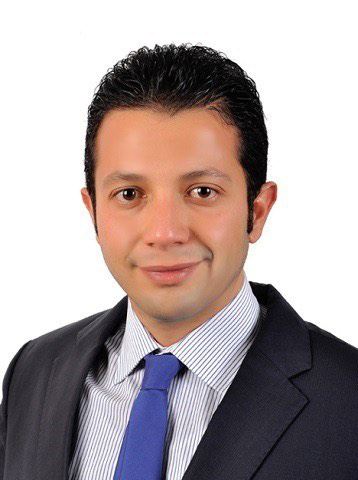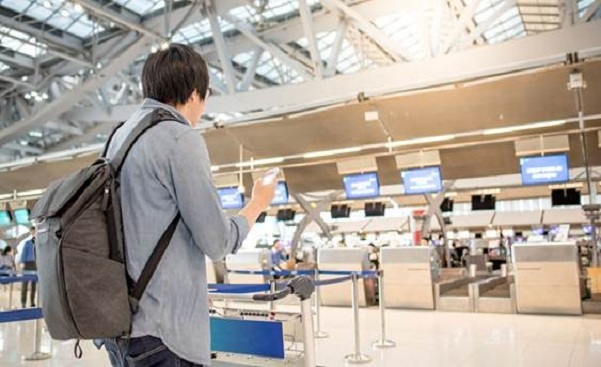
Rakan Khaled, Director, Global Business Operation at Collins Aerospace
As the impact of the COVID-19 continues to torment the aviation industry, so also is the industry becoming more innovative to better manage the effects of the pandemic and related issues. Collins Aerospace is already working on contactless technology to improve safety and efficiency at the airports. Rakan Khaled, the Director of Global Business Operation at Collins Aerospace here also discusses other endeavours of Collins Aerospace to engender efficiencies in passenger travel experience.
Q: Collins Aerospace is looking at developing a contactless passenger journey. How is this working out, and what should the industry be expecting in this regard, especially given the need for physical distancing and other protocols to combat the COVID-19 pandemic in the aviation industry?
A: We looked at every touch point at the airport for passengers and we considered how to convert them into contactless solutions. We start with our existing SelfPass biometric solution, which is the application where you register your biometrics linked with your boarding pass and integrate the full process with the airline, passing through self-service kiosks, or the bag drop unit to go through the entire process minimizing touch points reducing congestion and improving flow.
We also considered Personal Electronic Devices as an additional option, where passengers can use their smartphone to interact with kiosks or with several touch points throughout the airport. The aim was to minimize contact interaction with devices that other passengers could be using through checking, security and self-boarding to mitigate queues through the terminal and onto the aircraft.
In order to further mitigate congestion points around the airport, we also have data management solutions such as AirPlan, which can support airport operations as they adjust to new regulations, new processes and help the airport adjust to the post-COVID environment.
We utilize and optimize the resources of an airport in a way that we are optimally distributing the passengers at the airport to ensure that we don’t have an area that is congested. This helps enable social distance, reduce anxiety and improve the passenger experience, avoiding bottlenecks around the airport throughout the entire process.
Q: How do you think this contactless technology would be received in markets like Africa where various challenges such as poor power supply face many airports?
A: The reliability of networks and power in Africa has massively improved in the last five years and critical infrastructure is now as good as anywhere else in the world. So we really don’t think that this is a problem that that we should be concerned with.
We’ve been engaged in several discussions with several airports around Africa that are very interested in implementing self-bag drop solutions for example. We’re actually doing it in a couple of airports in Africa at the moment, but we’re having more and more interest every day. This offers an airport resilience and flexibility in how passengers are using the airport, distributing demand while also harnessing increasingly familiar technologies.
Q: Do you anticipate easy penetration of the contactless technology in Africa where new airports users and air travelers are expected to emerge from equally expected liberalization of air transport and trade on the continent?
A: The key thing here is: scalability to meet demand. We do expect the contactless solution to emerge and grow because it improves the passenger experience in many different ways. We anticipate varied progress when it comes to integrating with the immigration systems and internal regulations that are related more to security. But despite that there’s a couple of countries in Africa that are leading the way, ahead of other countries all over the world.
Several airports are now building extensions to the existing terminals as well instead of building a new airport. So, when we are building a system, we always have the idea of scalability in our minds to make sure that if you want to add a terminal, or to remotely host another airport somewhere else in the country, you can use existing infrastructure that the main hub airport has invested in rather than trying to build everything from scratch again.
Q: Various airports in Africa are working on upgrades and expansions that require more efficient technologies; as Collins Aerospace is working on future airport solutions, how would these align with airports in Africa?
A: I’ve been in many of the African airports myself and I was impressed with how they deal with the traffic and how they optimize the resources with very manual processes. With some artificial intelligence in planning and using some sophisticated algorithm behind how you allocate resources, you can optimize the passenger flow and feel like a non-busy airport.
As a company, we understand what the African markets need. So we’re not going to go with a system that’s built for an airport like JFK or Dubai and install it in a small airport in Africa.
We have to make sure that the solution is customizable and scalable to fit in the small airport as well as the big or large airports.
Q: Given the impact of the COVID-19 pandemic, do you think airports should see health as a priority, just like safety is also the industry’s number one priority and security also prioritized as a result of security breaches in the industry, and how would Collins Aerospace solutions come into play in this regard?
A: At Collins we look at health as important as security. Maybe five, six years ago everyone was very concerned about security and no one was paying attention to the health aspect of air travel. However, our solution is integrating both health and security within the same platform. When we integrate solutions like our SelfPass, with monitoring systems with biometrics and security system, you get the right balance.
You’re able to maintain social distancing and you’re also making sure that the right passenger is in the right place on the right time. And you’re also achieving all your check points or your check marks on the security as well. When we integrate the system, we look at the overall use case and understand the benefits of that.
You can integrate security systems like screenings, immigration database etc. together with biometric solutions that identify the passenger and with health monitoring systems that is capable of detecting symptoms of COVID-19. So this is key to maintaining health and security without jeopardizing any of the two, which are now of paramount importance.
Q: The expectations in the passenger journey could have changed more rapidly over the past one year of COVID-19; looking beyond the COVID-19 pandemic, what aspect of the passenger journey would experience the most dramatic change?
A: What will definitely change in the passenger journey is the self-serve with contactless solutions, and this will include countries that were not really adapting to that technology and were showing resistance. But this is now kind of going away with the urgency of dealing with health issues the world is encountering.
Before the pandemic, the self-serve allowed airports to increase the throughput of passengers quite rapidly.
That is why several airports around Europe or in the US have started implementing these systems to avoid having to expand airport terminal footprints. Now the demand is not just because of the throughput, it is also because of the health concerns and trying to maintain a healthy environment with social distancing. And also reducing the risk to crew and the airport staff and workers at the airports. At the same time, it does help a lot with the flow, it does help a lot with the time you spend to process a passenger. These solutions are faster than having it manually done by an agent, especially as passengers become more familiar with the process for themselves.
Q: Would you say the COVID-19 pandemic has thought the industry any lessons?
A: The main lesson learned, not just to our industry, but to everyone is how to quickly react to a change in the environment. We learned that if we’re not fast enough to react, we lose in many different ways and these can compound a problem.
As Africa emerges itself from the pandemic, the opportunity is there to accelerate implementations of technologies to support the aspirations for travel. Health will definitely accelerate self-serve solutions with a contactless perspective.

